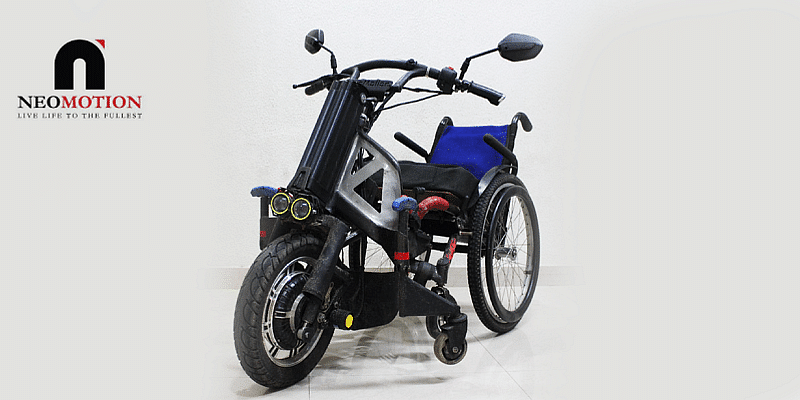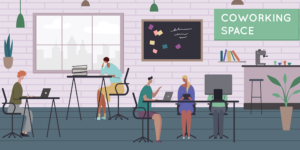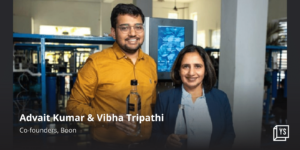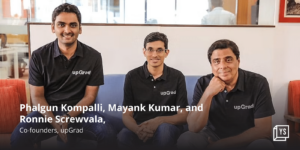How often do we see a wheelchair user at a park, at a mall or at a theatre?
More often than not, wheelchair users are confined to four walls. And many of them have lost opportunities due to the one-size-fits-all assumption when it comes to assistive devices.
NeoMotion is changing this narrative through its products.
Launched in 2020 by Prosus in partnership with Invest India, Social Alpha, and World Health Organization, Prosus SICA identifies and awards the most innovative Indian startups working on assistive technology solutions. The challenge has aided some amazing Assistive Tech solutions that have the potential to revolutionise the sector. And NeoMotion has emerged as one of them.
Started as a part of another product in the assistive devices space called ‘standing ovation’, the team at NeoMotion were initially conducting user trials. During interactions with close to 200 wheelchair users across 40 locations in India, they were trying to understand the socio-economic challenges that people face. “What are the existing products that they have? What are their mobility challenges? With the learning that we gained over six months of interacting with users, we narrowed down the crux of the issue. Users are confined within their houses. That’s when we came up with NeoMotion and the products that we’re building right now,” shares Swostik Sourav Dash, Co-founder and CEO, NeoMotion.
In 2018, the organisation consisting of a team of 15 people started work in full swing. The first couple of years were dedicated to design development, R&D, user trials, and refining the product to understand if there is an actual need. The next couple of months went into identifying the price point and seeing whether users are interested to pay for the value being offered. Almost a year went into setting up production. And in early 2020, NeoMotion launched its products.
“We came across multiple stories and instances of the strongest motivator of why we started the products that we’re building. One of them is a user who got a job offer from a public sector bank in India. He would have to travel 5-6 km every day to reach the bank and to come back. But then his everyday commute expense would be more than what he would be earning in one month. So there is an opportunity for people to go out and be economically employed. But because of the severe expenses that can be associated with travel, people are unable to take up jobs,” reiterates Sujatha Srinivasan, Co-founder, NeoMotion.
Swostik talks about the complete flexibility that Prosus SICA offers in terms of funding and how the program has helped NeoMotion fill key gaps with respect to product innovation.
Improving mobility for the differently-abled
One of the users of NeoMotion’s products was bedridden for 15 years before they could have access to a smartphone and Google solutions for independent living.
The founders believe that unless there is economic independence, everything else cascades. To buy a mobility product, one has to be mobile. Building something that would allow users to go out to the office, to the market or even just for recreation, has been NeoMotion’s mission right from the start.
By offering a radius of mobility of about 10-15 km, the team at NeoMotion is helping users build strong roots in the community while being employed. The organisation’s product development cycle focuses on reducing the hurdles in day-to-day activities. This makes the device easy to use on sandy or gravel terrains, on roads with potholes, and even if it rains.
Vivek Sarda, Co-founder, NeoMotion, explains that there are products for both indoor and outdoor mobility. “When it comes to indoor mobility, 95 percent of all wheelchairs that are sold in India are one-size-fits-all. Products like modified scooters, auto rickshaws and tasks come under outdoor mobility. But imagine a wheelchair user shifting independently from their wheelchair to this. We wanted to address these challenges of indoor and outdoor mobility and provide a comprehensive solution,” he adds.
Scaling new heights with NeoFly and NeoBolt
Built according to a particular user, NeoFly is a personalised, compact wheelchair that has about 18 customisations based on the body measurements of the user, their health condition and the terrain environment. Although the user doesn’t need to shift from the wheelchair to any other vehicle, whenever they do, they can simply attach NeoBolt (an add-on) to the wheelchair and step out on their own. It’s powered by a lithium-ion battery, travels up to 30 km for every charge and can be recharged in four hours.
Fitted with all safety features that are typically present in an automotive two-wheeler, and rear light indicators to ensure that it’s safe to be driven on roads and improved back support, NeoBolt has been built in such a way that it can sustain uneven terrains and Indian roads.
Added to this, NeoFly is very efficient to propel since it’s powered by hand and helps in covering three to five times more distance than conventional reach. The user saves a lot of energy and toppling a wheelchair and wheeling it becomes fun and enjoyable and is not a tedious activity anymore.
The independence that NeoMotion is providing people by just allowing them to be mobile is nothing short of incredible.
Swostik reveals that the body language of users has changed visibly. “They feel good about themselves. Their approach towards life is also very different. And with NeoBolt, users are confident that whenever they want to go out, they don’t need to call somebody or ask someone for help,” he adds.










